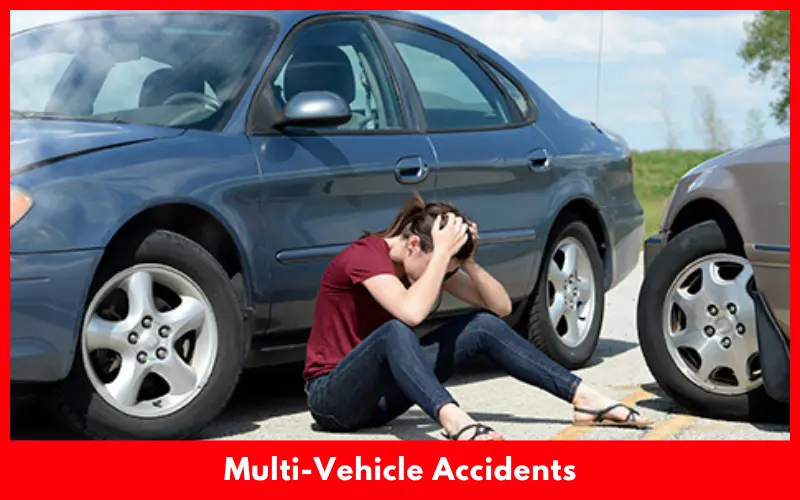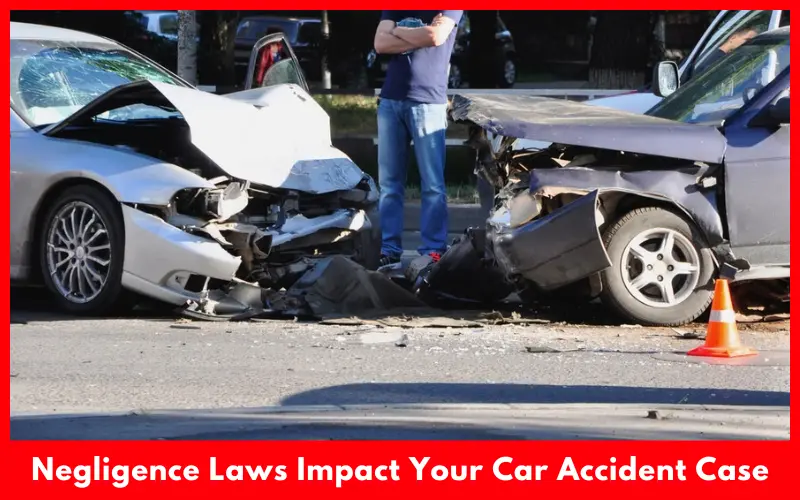Accidents involving cars can be extremely stressful, resulting in everything from injuries to expenses.
Victims of car accidents in Nevada need to understand the negligence laws impact their case could have if the state’s comparative negligence law applies to their situation.
It could potentially have an enormous negligence law impact on their ability to recover damages.
Article Summary
What is Comparative Negligence Laws Impact?
Comparative negligence refers to the legal doctrine applied to determine fault for being involved in an accident. Comparative negligence allocates a percentage of negligence to each party involved in an accident.
For example, your contribution to the accident could be 10 per cent, while the other person’s contribution is 90 per cent. The contribution is used to determine how much of your award is reduced.
There are several variations of the comparative negligence framework, including pure comparative negligence, modified comparative negligence and contributory negligence.
Nevada’s Modified Comparative Negligence Rule
The common law in Nevada has a modified comparative negligence rule. Here this means the injured party can still obtain damages if they have been determined to be less than 50 per cent responsible for the incident.
If you’re found to be 50 per cent or more liable, you’re barred from recovering damages. Let’s say you’re in an auto accident with $100,000 in damages.
- If you get found to be 20 per cent at fault for the accident, then your recovery will be reduced by 20 per cent, so you’ll receive $80,000.
- If you are deemed at least 50 per cent at fault, you get nothing.
At its most fundamental, the determination of fault can make or break a car accident case. Police reports, eye-witness testimonials, camera footage and expert testimony will govern whether one party or both contribute to a percentage of fault. In Nevada, both sides can MITIGATE OR AFFIRM FAULT ALLOCATION.
Impact on Your Compensation
Under Nevada’s modified comparative negligence rule, how much money you will recover may be significantly different than you what you need to know:
Partial Compensation
If you’re partially at fault, you can recover damages, but your award will be reduced by the percentage of fault assigned to you; it’s worth fighting it out and putting on your best case, so your percentage of fault is as low as possible, and your damage award is as high as possible.
The 50% Threshold
If the jury finds you more than 50 per cent at fault, you can recover no damages. Dealing with this outcome could very well require a high degree of evidence and help from an attorney.
Negotiation Leverage
It can also empower you in your interaction with an insurance adjuster negotiating a settlement: you know that comparative fault does not completely bar you from recovery.
How To Protect Your Interests
The Las Vegas personal injury attorneys at Harris & Harris Injury Lawyers reccomend to take the following steps to protect yourself after a car accident:
- 1. Make sure you and other people are out of harm’s way. If you can’t get out of the car, remain there, but make sure your car’s lights are on.
- 2. Notify 911 even if you think the damage is minor.
- 3. Don’t attempt to talk to the other driver(s) involved in the collision.
Seek Medical Attention
You might assume that your injuries are minor, but seek treatment immediately after the accident. Any medical records can serve as supportive evidence for your case.
Gather Evidence
Immediately after the accident, collect as much evidence as possible. This includes:
- Photographs: Take photos of the accident scene, vehicle damages, and any visible injuries.
- Witnesses: Obtain contact information and statements from any witnesses.
- Police Report: File a police report and get a copy of the report – it is an objective version of the accident.
Maintain Communication and Documentation
To further protect your interests and document the accident, keep and file all communications and documents related to the accident in clear and organised order:
- Log all communications with insurance companies: date, time, name of contact, summary of conversation.
- To date, there has been limited accountability for fraud perpetrated by insurers. Perhaps it’s time for states to require such accountability!
- Medical Providers: Document interactions with medical providers regarding diagnoses, treatment plans, and prescriptions.
- Medical Bills, Car Repairs, Rental Car, Lost Wages: You will need as many records as possible narrating your expenses.
- Correspondence: Save all communications about your case – emails, letters and correspondence with the opposing party’s insurance company.
Comparative Negligence in Specific Scenarios
Your car accident case will be differently impacted by Nevada’s comparative fault rules depending upon the set of facts at issue. Car plaintiffs will often claim the following (each implying car accident damages and alleging comparative fault): Rear-End; Head-On; Turn Left Or Right; T-Bone; Sideswipe; Doored; Bike/Pedestrian/Motorcycle; Uninsured Motorist/Underinsured Motorist (UM/UIM).
Multi-Vehicle Accidents
In multi-car accident cases, where more than one party may share in the fault, fault percentage is still apportioned under Nevada’s comparative negligence rules, though the process is more complex.

Each party’s percentage of fault in an accident is determined, and compensation is equally adjusted to reflect that responsibility.
Pedestrian Accidents
Pedestrians are presumed to have the right of way, but that doesn’t mean that they can’t share part of the blame for their accident under the right circumstances: jaywalking, ignoring traffic signals, stepping out between cars in a driveway, and even crossing the street with their earbuds in are some examples of pedestrian mistakes that could mean sharing faultigence laws apply to the pedestrian accident, that too could mean reduced compensation for the pedestrian
Hit-and-Run Cases
In hit-and-run cases, it might be difficult to traceative culpability will driver is later apprehended and fault is proven. But insurance considerations might, in any event, make recovery more complicated, through uninsured motorist claims.
Legal Exceptions and Special Rules
The following scenarios are exceptions to Nevada’s comparative negligence rule:
Dram Shop Laws
Nevada has no dram a drunk visitor is not enough to make the establishment liable for an accident caused by that person. But if a drunk driver causes an accident, there is a good chance that the drunk may be found at fault, which will affect the percentage of comparative negligence.
No-Fault Insurance
Nevada is a non-‘no fault’ state – this means that you can pursue the other driver, without first exhausting your own insurer – and your damages will be apportioned according to your degree of fault.
End Note
It is important to understand how Nevada’s comparative negligence statute might impact your case if you have been injured in a car accident. If partial fault does not preclude you from recovery, then evidence should be prepared and obtained on your behalf immediately, and the assistance of an attorney should be enlisted as soon as possible.
Knowing the law and your rights will help you navigate this area of the law, and you’ll have the best chances for a favourable outcome.

